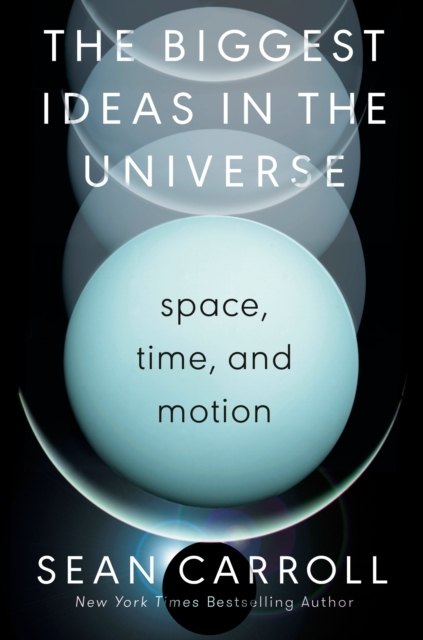The Biggest Ideas in the Universe
Space, Time, and Motion
By Sean Carroll
Dutton, Sep 20, 2022
The first time I heard Sean Carroll speak was almost 20 years ago in Tucson, Arizona, where he gave a physics colloquium. He had just published his first book, a textbook on General Relativity. His colloquium was basically an introduction to modern cosmology, dark matter, dark energy, and the cosmic microwave background.
It was a splendidly delivered talk; the students loved it. But later I overheard several faculty members remarking they had found it “too simple” and that Sean didn’t seem to be doing much original work. To them, the only good talk was an incomprehensible one. Those remarks, I would later come to realize, are symptomatic of academia: You impress your colleagues by being incomprehensible.
Sean had begun blogging the same year I heard him speak in Tucson, 2004. I would begin blogging not much later, though for unrelated reasons (I originally didn’t intend to write about science), and naturally I kept track of what he was up to.
Since then, it has made me very happy to see Sean making a good career both in research and in science communication, on his own terms. I have met him a few times over the years, read most of his books, and reviewed a few. But I didn’t anticipate he’d pop up on YouTube in 2020, stuck at home during the first COVID lockdowns, like all of us. There he was, green screen as crappy as mine had been a year earlier, promising to cover “The Biggest Ideas in the Universe”, when I had just decided to put more effort into my own YouTube channel.
To my relief it became clear quickly that Sean’s YouTube ambitions were much different from mine. He went for the basics where I prioritized brevity. If my YouTube channel is a buffet, then his is the farmer’s market. And luckily his YouTube appearance remained temporary.
His newest book is the first of three to summarize his YouTube series, focused on dynamical laws, space, and time. It gradually builds up from functions to equations of motions, to concepts like energy, velocity, and momentum, space-time and its geometry, and finishes with black holes in General Relativity. He uses the most essential equations and explains how they work, but you can follow the explanation just by reading the text.
This isn’t your usual popular science book. It doesn’t discuss speculative new ideas, but it’ll give you the background to understand them. It’s a timeless book that I am sure will become a classic, a go-to reference for the interested non-expert who wants to see how the gears of the machinery turn underneath the superficial stories you find in popular science books.
If the three volumes are complete, they’ll presumably cover the classes you’d take for a master’s degree in physics. There aren’t many books like this, which fill the gap between textbooks and popular science books. The only other example that comes to my mind is the “Theoretical Minimum” series by Susskind, Hrabovsky, Friedman, and Cabannes. Sean’s is more focused on the essentials and somewhat lighter in the maths. I have also found Sean’s to be better written.
I’ve always admired Sean for ignoring the unwritten dictum of academia that inaccessibility makes you move valuable, and for his enthusiasm in helping people understand physics, despite the fact that, 20 years ago, most senior academics considered this a waste of time. Today the situation is entirely different. I think Sean was one of the people who changed this attitude.


No comments:
Post a Comment
COMMENTS ON THIS BLOG ARE PERMANENTLY CLOSED. You can join the discussion on Patreon.